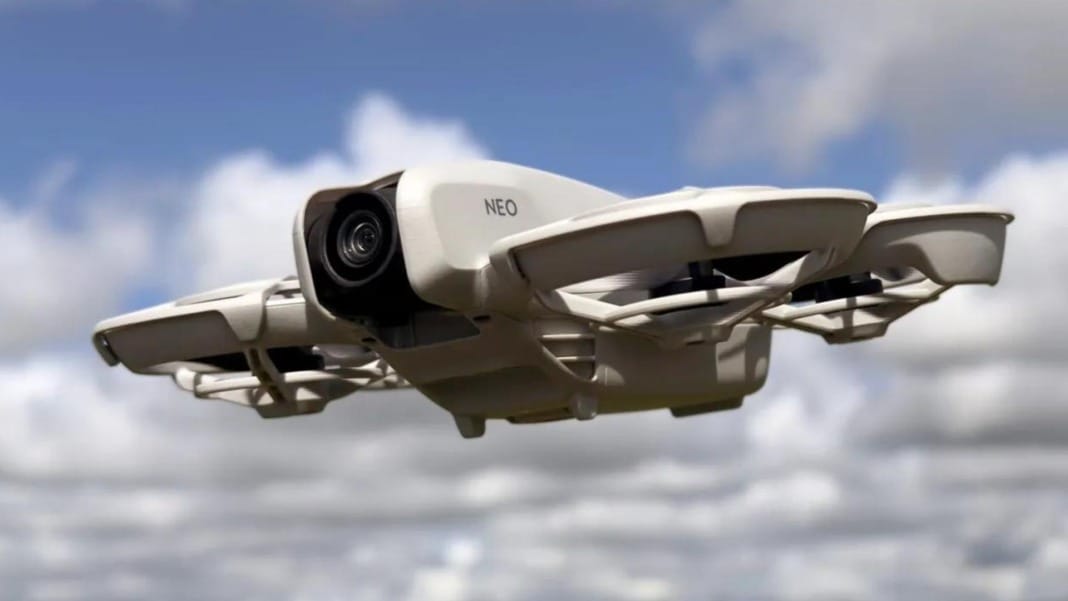DJI has introduced its smallest and lightest drone yet, the Neo, at IFA 2024, offering a new level of portability and convenience for drone enthusiasts.
Weighing just 135g, the DJI Neo is lighter than most smartphones, including the iPhone SE, which weighs 144g. This drone is nearly half the weight of DJI’s Mavic Mini and Mini 4 Pro, which weighs 249g. Its ultra-lightweight design means you won’t need to register it under local regulations in Singapore, as registration is only required for drones weighing more than 250g.
A user-friendly experience
DJI has designed the Neo to be incredibly easy to use, even for beginners. Switching between its six intelligent shooting modes is simple—just press the Mode button on the drone’s top. The available modes include:
- Expanse: The Neo flies backwards and ascends while keeping the camera locked on the subject, capturing video.
- Circle: The drone circles the subject, providing a dynamic shot.
- Rocket: The Neo ascends vertically, with the camera pointing downwards.
- Spotlight: It rotates while keeping a subject or object focused within the frame.
- Helix: The Neo spirals upwards around the subject.
- Boomerang: The drone flies around the subject in an oval path, ascending as it moves away and descending as it returns.
After selecting the shooting mode, the drone lifts off from your palm, captures the video, and then safely returns to your hand. For added safety, the Neo comes with full-coverage propeller guards.
The DJI Neo can also be controlled by voice, making it even more accessible. Using a paired smartphone, you can give it commands like “Hey Fly” to control its movements. The DJI Fly app provides virtual joysticks and a Wi-Fi connection, allowing you to control the drone within a 50m range. For those who prefer a more traditional experience, the Fly More Combo includes DJI’s RC-N3 remote controller for manual piloting.
Trade-offs for size and simplicity
Due to its small size, the DJI Neo comes with some compromises. Unlike the more advanced six-axis gimbals in DJI’s higher-end drones, it has a single-axis mechanical gimbal. Even the Mini 2 SE offers a three-axis gimbal, so there may be some noticeable camera shake, especially at high speeds or during sharp manoeuvres. However, DJI has equipped the Neo with RockSteady electronic image stabilisation to help reduce this issue.
The Neo’s small battery also limits its flight time to just 18 minutes, meaning it’s best suited for short flights and close-range shots. The drone does not include obstacle avoidance technology, so DJI advises users to fly in open areas and keep the drone in sight.
Other specifications include a 12MP 1/2-inch image sensor, the ability to record 4K video at 30fps, Level-4 wind resistance, 22GB of internal storage (enough for about 55 minutes of 1080p video), and support for the automatic Return to Home (RTH) feature.
Pricing and availability
The DJI Neo is now available for purchase through DJI’s official website and on online platforms such as Lazada and Shopee. Two configurations are available:
- DJI Neo: Priced at S$249, this package includes the drone, one battery, one pair of propeller guards, a spare set of propeller guards, a gimbal protector, a USB-C to USB-C PD cable, a screwdriver, and four spare propeller screws.
- Neo Fly More Combo: Priced at S$439, this bundle includes everything from the base package, the DJI RC-N3 remote controller, an RC USB-C cable, and a two-way charging hub.
With its lightweight design and ease of use, the DJI Neo is perfect for beginners or those looking for a portable, simple-to-fly drone.





